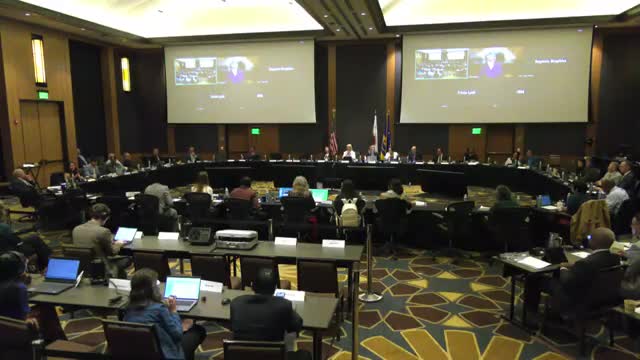Annalise develops predictive model for skin cell growth and scar eradication
July 13, 2025 | University of California, Boards and Commissions, Executive, California
Thanks to Scribe from Workplace AI and Family Portal , all articles about California are free for you to enjoy throughout 2025!

This article was created by AI using a video recording of the meeting. It summarizes the key points discussed, but for full details and context, please refer to the video of the full meeting. Link to Full Meeting
Annalise explained that her current model is still in its early stages, primarily targeting the dermis layer of the skin. However, she envisions expanding her research to include the epidermis, which could enhance the model's effectiveness in addressing other skin growth disorders. "The goal is to fine-tune our model to help stop unwanted growths and promote healing," she stated, emphasizing the collaborative nature of her work with biologists to understand the interactions between skin cells.
The meeting also highlighted Sophie’s research on HIV, utilizing a technique called Episcan, which has previously been applied in cancer research. Sophie expressed optimism that her findings could extend beyond HIV, potentially benefiting the study of other viruses. "While we haven't explored other viruses yet, I believe this technology could be useful in that context as well," she noted, showcasing the interdisciplinary potential of their research.
Regent Hernandez and other board members expressed their admiration for the students' dedication and innovation. "You remind us why we're here," he said, reflecting on the importance of investing in research as part of the University of California's mission. The meeting concluded with a sense of renewed purpose, as the board members recognized the vital role these young researchers play in shaping the future of healthcare and education.
As the discussions wrapped up, the excitement in the room was palpable, leaving attendees eager to see how these promising projects will evolve and contribute to the broader scientific community. The commitment to fostering such groundbreaking research underscores the University of California's position as a leader in higher education and innovation.
Converted from Board 8:30 AM meeting on July 13, 2025
Link to Full Meeting
Comments
View full meeting
This article is based on a recent meeting—watch the full video and explore the complete transcript for deeper insights into the discussion.
View full meeting
